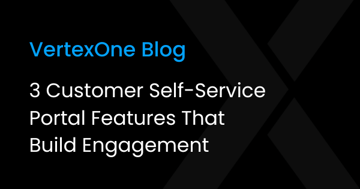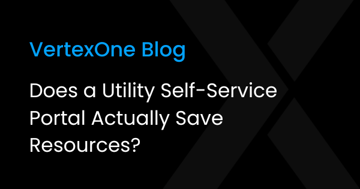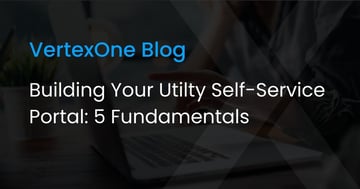When shopping for a customer self-service (CSS) platform, you need a solution that meets your business needs, offers security and provides a user-friendly, flexible front-end. Your system should be comprehensive in the features it offers, but scalable to allow for ongoing evolution.
As a provider of technology solutions purpose-built for utilities, we understand that the vendor you select for your system needs to have a proven track record of providing these capabilities, VertexOne has leveraged its years of experience in CIS and customer care to deliver, host, and manage self-service solutions for North American utilities for over two decades. So, we know a thing or two about customer self-service, especially when it comes to utilities.
Whether you’re looking to implement a new customer self-service platform, upgrade your existing self-service capabilities, or simply learn more about how VertexOne can support your utility’s Customer Engagement initiatives, we want you to get started off on the right foot. Read through, print out, or mark up the following checklist to remind yourself of the features and minimum functionalities that a strong self-service offering needs to provide:
For getting started:
❑ A site that conforms to Web Content Accessibility Guidelines (WCAG) accessibility standards
❑ A clean, responsive web framework that adapts to the device the end-customer is using
❑ Forgotten username/password functionality
❑ Initial profile registration and set up
❑ Login page
❑ Flexibility to adapt the look-and-feel to match each utility’s brand, colors and themes
For account management, the CSS should provide the ability to:
❑ Register more than one account number to a profile
❑ Register the same account number to multiple profiles
❑ Switch easily between multiple registered accounts
❑ View and pay statements within accounts
❑ View an account summary/overview page with basic information including amount due, last bill date, balance forward, current balance, etc.
For bill/payment management the CSS should provide the ability to:
❑ Accept multiple payment methods and future dated payments
❑ Apply for and enroll in payment arrangements
❑ Enroll in recurring payment programs
❑ Enroll in automatic payment or equal billing plans
❑ Pay bills online, either integrated or linked offsite
❑ Access current and historical e-bills in PDF format (at least 24 months history)
❑ View a payment history table (last 24 payments)
For customer and program enrollment, the CSS should provide the ability to:
❑ Enroll in (opt-in) to receive proactive communications
❑ View the status of any service request and request service
❑ Proactively market to customers based on specific account attributes
❑ Provide targeted marketing capabilities based on customer demographics, enrollment status in various programs, etc.
❑ Update account/profile information (address, phone number, etc.)
❑ Display splash pages and rolling banners that encourage customer action based on conditional flags
The CSS should provide a variety of graphs, trends, or reports about a customer's consumption/usage, such as:
❑ A 13-month consumption history graph
❑ A 24-month billing and consumption history table
❑ Access to consumption history and trending
❑ Graphs with drill-down capabilities for viewing energy usage patterns over time, with selectable granularity (if time-of-use data is available)
❑ Usage summary tables comparing months to previous periods and the same period one year ago.
For site administration, the CSS should provide the ability to:
❑ View reports via an admin portal
❑ Separate content from business logic, so content and styling can be easily updated regularly
❑ Display message when site is taken offline for maintenance
For cloud-hosted solutions:
Your CSS vendor should provide services for a predictable cost and ensure your CSS investment remains up-to-date both technologically and functionally. This means providing:
❑ Managed infrastructure including capacity planning with guaranteed SLA’s
❑ A PCI compliant hosting environment
❑ Technological currency, that is, maintaining the infrastructure with currently supported software, hardware, and the latest browser versions
❑ A detailed Functional Roadmap including periodic product releases
Remember that while customer self-service can make your utility’s operations more efficient, it is all about customer engagement—and customers today expect more. While the above checklist is not exhaustive, it represents the minimum acceptable features as you consider your ideal customer self-service system. And it’s just as important that the CSS provide your operations team the tools they need to manage and support your self-service offering.
Self-service capabilities help position your utility and customers for ongoing success by putting the tools they need to take control of their utility communication at their fingertips. By using our checklist, you can ensure that your CSS implementation will have a strong foundation on which to build.
Questions? Contact us today for in-depth information on how VertexOne can support your self-service goals.


